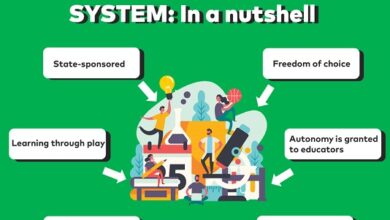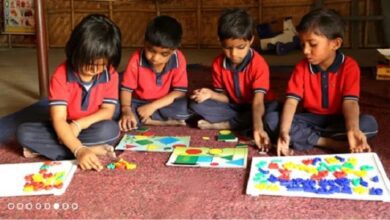Communicative method of language learning/advantages/disadvantages
COMMUNICATIVE METHOD
The communicative method is a language teaching technique that emphasizes interaction and communicative competence as the main bases of study of a language. With this method, students work in pairs or groups using the language to solve certain tasks. Communicative method of language learning
The communicative method generally consists of two parties involved in an interaction where one party expresses an intention and the other reacts. Since communicative approaches are more a series of strategies than a proper method are used by many professionals who interpret and implement it in the classroom in different ways. Howatt (1984) distinguishes between a “strong” and a “weak” version of the communicative method.
The “strong” version argues that a language is acquired through communication, while the “weak” version (converted into standard practice today) emphasizes the importance of using the language to learn within a broader program. In other words, while the “weak” version means “learn to use the language”, the “strong” version implies “use the language to learn it.”
The theory behind this approach is that “activities that involve communication favor learning.” Therefore, those activities that favor language learning are significantly selected.
This led to the creation of communicative agendas, which consist of combinations of structural and functional contents such as a) typical situations in which the language is used (eg traveling, business) b) topics to talk about (p. eg education, shopping) c) the functions of the language (eg describe something, ask for information) d) vocabulary and grammar. Communicative method of language learning
What activities are characteristic? Communicative method of language learning
The type of communicative activities is very wide, as long as they involve communication, exchange of information and interaction by the student. Some examples are: fill in gaps, dialogues, interviews, debates or exchanges. Richards and Rodgers (2001) propose three types of communication materials:
- Texts. Most current textbooks consist of a syllabus with structural and functional content that is carried out through units that contain a) real or adapted texts with comprehension questions b) communicative activities for couple or group work c) grammatical explanations with exercises (eg fill in gaps).
- Chores. These can be games, role plays, chips, and in general material that favors communication. They usually come in the form of an activity package, exercise books, or simply appear as an appendix at the end of the textbook.
- Real material . It may consist of magazines, newspapers, and other visual elements on which communication activities such as maps, images, symbols, graphics, etc. can be built.
Relationship with other methods Communicative method of language learning
Historically, the communicative method has been considered the response to the audiolingual method and an extension of the notional-functional method . Like the latter, the communicative method also emphasizes helping students use the language of learning in a wide variety of contexts and gives importance to learning language functions.
Unlike the grammatical translation method, its main objective is to help students create meaningful phrases, instead of helping them build correct grammatical structures or achieve perfect pronunciation. This means that the learning of the foreign language is evaluated taking into account how the student develops his communicative competence, which could be defined as the student’s ability to use his knowledge of the formal and sociolinguistic aspects of the language to communicate properly. Communicative method of language learning
Role of the teacher
You must consider the needs of the student and rely on the skills that the student wishes to develop. It is also up to him to help the student understand and respect the socio-cultural codes.
Role of the student
He is a person responsible for his learning process. You must play active and passive roles during the process. It is expected that the trainee will be able to specify a wide range of communicative functions, to recognize pragmatic and sociolinguistic elements in these situations, and to apply communicative interaction strategies in the target language. It is intended, therefore, that the competence of the apprentice becomes similar to that of a native speaker.
Presence of grammar
Grammar is learned both deductively and inductively; that is, grammatical explanations are considered activities that help explain specific uses. In this method, the language must be studied from the observation of its use, not in abstractions about it. As a consequence of this, it is passed from a sentence level to a discursive level, in which language is a means for communication to take place. In this method, it is also considered that metalinguistic reflection provides students with tools to monitor their production, considering that errors are not always errors. Communicative method of language learning
Its practical principles are:
- Be aware of what you are doing.
- The whole is more than the sum of the parts
- The processes are as important as the forms.
- To learn something, do it.
- Errors are not always errors.
ACTIVITIES – COMMUNICATIVE METHOD
Topic: Food Recipes
Level: A2
General objective:
- Explain step by step the procedure for preparing a recipe.
- Investigate about typical dishes in Latin American cuisine.
- Give instructions for a procedure using the Imperative mode structure.
Activities:
1- The teacher presents to the class a recipe for this dish using each step with verbs in Imperative mode. It can be presented through a video or photographs accompanied by the steps of the recipe.
2- Students are given the recipe step by step to follow the instructions. They must also identify what the actions are in each step, or the verbs in Imperative mode. Communicative method of language learning
3- In pairs, students should search and research on a simple and fast Latin American food recipe, with few steps, to develop it in class. Once the recipe is found, they will write it by changing the verbs in Imperative mode. You can add photos even.
4- The recipe will be presented and explained in class by each couple.
ADVANTAGES AND DISADVANTAGES OF THE COMMUNICATIVE Communicative method of language learning
Among its advantages we have:
- Through this approach, students develop language functions, that is, they further evolve their speaking ability.
- It gives a lot of importance to the students’ experiences (their daily life) to practice and thus achieve greater language performance in them.
- You can work in pairs, groups etc, activities that promote or stimulate the fluency of speech. (role plays)
- Enter real texts in the learning situation.
- Create meaningful phrases in the student.
And in its few disadvantages we find:
- As it is a relatively “current” approach, teachers do not know its usefulness to the fullest, that is, they do not take advantage of what it offers, often causing a rare interpretation of it.
- It is an approach with a very general teaching and dimension, it does not have clearly defined practices.
- And it does not have a theory that explains it more carefully. Communicative method of language learning


